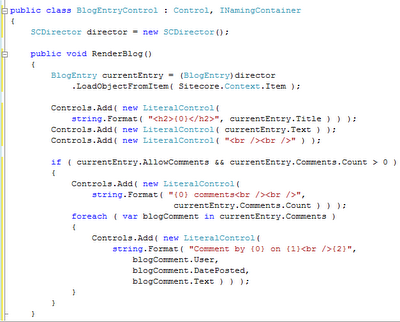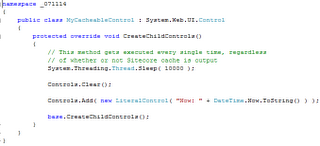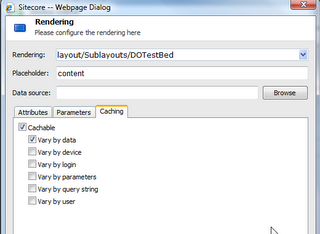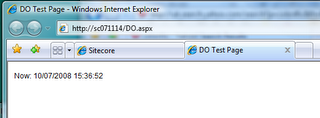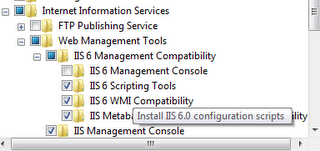No really. Say goodbye. What, just 3 weeks ago, was "designed to drive the largest sites on the planet. ... ... deliver compelling user experiences at lightning speeds using a combination of high availability options,
intelligent caching controls, and the power of ASP .NET 2.0" (ref:
http://www.sitecore.net/Products/Sitecore%20CMS.aspx) is now yesterday's news.
As I am sure any reader of this blog will know, the new Sitecore CMS flagship, Version 6 (formerly or maybe still known as Crestone) launched on 30th of July 2008, and everyone at Sitecore seems well pleased with it. They have every right to be, don't get me wrong... After what happened "back in the day" when Sitecore 5 was first launched, the transition to Sitecore 6 promises to be a much smoother ride indeed. It looks good, congratulations :-)
This post isn't about Sitecore 6 however. It's about what happens now, to you, to your clients, to your existing Sitecore 5.x solutions.
If it wasn't for the fact that I don't particularly want to spend my entire time blogging on potential and concrete issues in Sitecore 5.x; I could probably still make this a full time profession. Known issues, hotfixes, regression and non-regression tested 5.3 builds...
The question I'm asking is; will we ever get to see a stable 5.3 release now that all the spotlight has moved on to the new emperor's clothes? Surely there must be hundreds if not thousands of 5.x sites out there, and surely one cannot reasonably expect all of them to be willing to invest quite substantially in the upgrade to 6.x just to get a bugfree (or well... tolerable) product?
First line of defense from Sitecore Support seems to see this as perfectly reasonable. Take this recent scenario that played out. You can reproduce this yourself very easily. I tested this on Sitecore 5.3.1 Build 071114 - the only current Sitecore "Recommended Release" (you running 5.3.2?....)
Make yourself a new control, like this:
Simplest control ever. It outputs the current time. Now register this control on a sublayout.
Go to your Layout settings on the sublayout you registered the control on, and make sure caching is enabled (you DO do this by default, I take it..?).
Make sure you've published, and go take a look. Not surprisingly, the Sleep( 10000 ) in there causes quite a delay. Pretend this is your extremely heavy backend integration code executing. After the delay has passed, your page comes up.
Quite as expected. Now click refresh... This is where you start speculating if you did remember to configure caching correctly. I mean, after all, it is
quite an involved process with lots of little things to tweak.
The 10 seconds will pass, and voila... Erm.... Well.... there you go, your cached output - again.
So Sitecore realises, AFTER deciding to render your control again (and therefore, running your extremely heavy backend integration code once again), that "aaah... ok let's disregard, and just use what's in cache instead.
Makes a lot of sense doesn't it? ;-)
In case you didn't follow. Sitecore will execute everything, thereby allowing your webserver to consume expensive resources (and even stop and wait for the result), then dump the result and use what it has in cache already.
Mmhmm.
Admittedly, caching and the way Sitecore has to implement it is very tricky stuff indeed. Am not disputing that there's a bug here (... but has this ever worked?). What really got me ticking was the response I got from Sitecore Support on this matter.
"Hi Mark,I have checked this and indeed Sitecore will return cached output but control code will be executed. This was fixed in Sitecore 6.Best regards"
To which, I imagine, there can only be one response; "So?". I have requested information on when a 5.3 fix will be available. Was told this has been put forward to developers, so we'll see what comes of it.
I am stunned however, at how easily the "support decision" was to proclaim that a switch between major versions was the way to go. I don't know about you guys, but I would hate having to go to my customer and go... "You know... I know that 3 weeks ago, Sitecore was the king of kings, intelligent caching and so on. But you see... well... it doesn't really work like intended. Don't worry however, your £75.000 investment is safe and sound. All you need to do, is invest in Sitecore 6 training for your 8 editors (who only NOW are getting to know the system), a simple quick £10.000 upgrade project, possibly a small license increase and THEN we're in business. Really, we are."
Sitecore Support was right, just for the record. The problem described here does not manifest in Sitecore 6.
